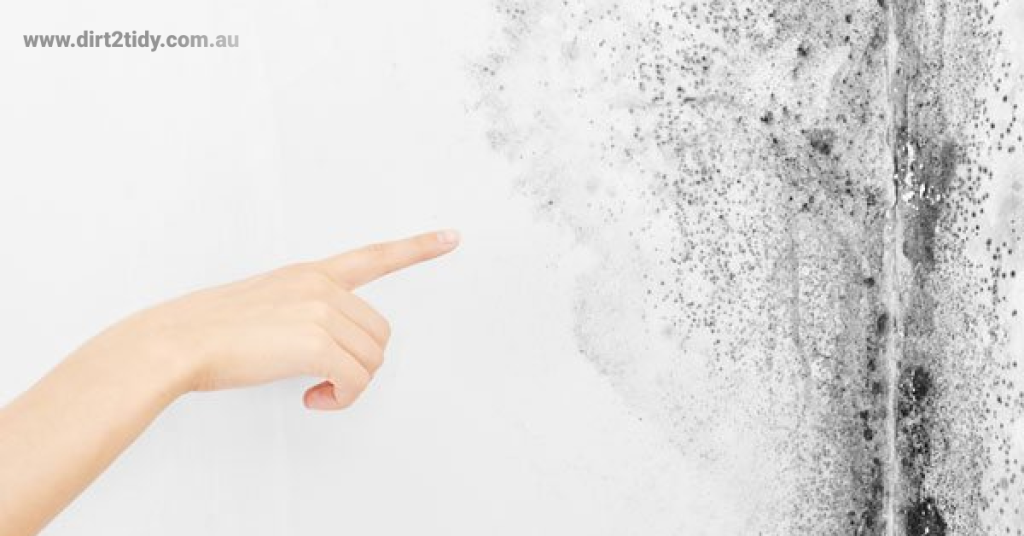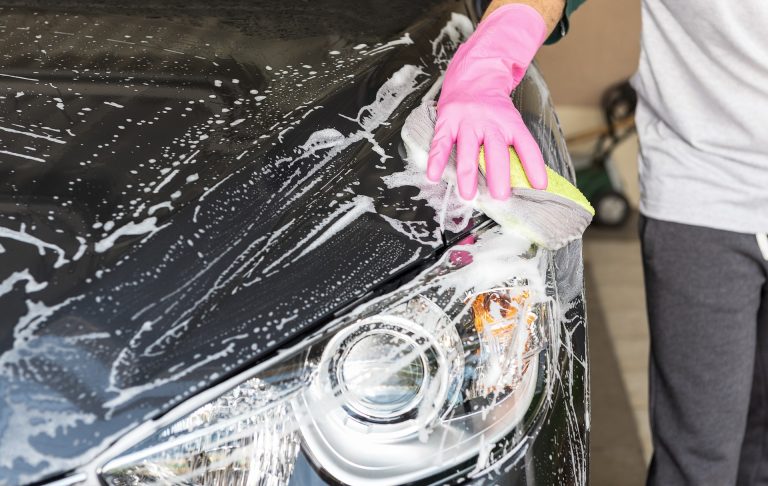Mould is a bothersome home issue that might seem simple and innocuous but ends up being challenging and even dangerous to one’s health.
The living substance seems to choose the walls and ceilings as places to develop, and if no action is taken, it will continue to grow and ruin a material’s structure, so get rid of mould quickly. You may save money and avoid more problems by being aware of them and knowing how to implement them correctly.
Mould growth, what is it?
Various fungal species are referred to by the word “mould,” and they like food and damp environments for growth. The walls and ceilings of bathrooms, kitchens, garages, and window frames are the most common places to find mold, especially in portions of the house that aren’t well ventilated.
You may also like to read: Can I break my lease because of cockroaches and mice?
To prevent mould growth, keep your house air free so there are no mouldy areas or health problems.
The risks of having mold around your windows and on your ceiling are high.
While mold is necessary for the biodegradation of living things in the natural world, it may be hazardous to people who are in small quarters. The fungus releases spores that are invisible and simple to breathe in, and these spores pose a concern.
Frequent headaches, allergies, respiratory issues, and the onset of chronic illnesses like asthma or rhinitis can all be brought on by ongoing mold exposure.

What led to the growth of mold on your ceiling?
Due to moisture brought on by roof damage and leaks, excessive humidity levels, poor ventilation, cooking, condensation, etc., mold develops on ceilings. Mold spreads quickly once it emerges, much more quickly than it would outside.
The main culprits that contribute to ceiling mold include:
- Roof leaks and water damage – Leaky roofs or burst pipes can create damp patches on ceilings, making them an ideal breeding ground for mold.
- High humidity – Areas like bathrooms and kitchens often have increased moisture in the air, especially without proper ventilation.
- Condensation from daily activities – Cooking, showering, and even drying clothes indoors can increase moisture, which then settles on cooler surfaces like the ceiling.
- Poor ventilation – Spaces that lack adequate airflow, such as garages, window frames, and shaded exterior walls, trap humidity and encourage mold growth.
Once mold appears, it can spread rapidly, especially in the closed, moisture-rich environment of your home. To stop additional contamination of the ceiling, you must act fast the instant you see stains that are black or greenish—clean mould off the ceiling immediately.
To stop additional contamination of the ceiling, you must act fast the instant you see stains that are black or greenish are the affected areas clean mould off the ceiling immediately.
Our health may be impacted differently by various mold forms. Brown or green colored mold may produce minor symptoms like sneezing and skin discomfort. On the other hand, black mold is quite hazardous to people. It is easily identifiable, and expert assistance would probably be needed to completely eradicate it.
In summary: Mold on your ceiling is more than just an eyesore—it’s a warning sign of underlying moisture issues and potential health hazards. Act quickly, identify the type, and don’t hesitate to seek professional help if you spot stubborn or widespread black mold.
How can mold development be stopped?
By taking the proper steps, you may prevent having a moldy ceiling now that you know what’s causing the issue.
Follow these steps to stop mold growth on walls and ceilings:
- Regularly inspect your home, particularly if you reside in a rental property, since mold might be discovered;
- inspect the gutters and pipes and make prompt repairs;
- Install insulation on exterior walls that are frequently exposed to water or that are in the shade;
- Schedule regular and thorough cleaning sessions or consider hiring a professional cleaner to help;
- Boost the ventilation;
- Don’t dry your clothes, towels, or other items inside the house;
- As soon as you can, throw out any moldy food and other contaminated items.
- Watch out for: How to Safely Remove Wallpaper
What if mould keeps coming back?
If you find that mould is a repeat offender on your ceiling, it’s a sign that a single clean-up isn’t enough—and the underlying cause may still be lingering. In such cases, persistence is key.
- Keep a close eye: Inspect the previously affected areas every day so you can spot early signs of new growth. Early intervention can save you from a major mould invasion.
- Consider repainting: If the infestation keeps returning, it might be time to strip away the old, possibly contaminated paint. Repaint with a high-quality anti-mould or mould-resistant paint. Brands like are known for their durability and added protection. These specialized paints help block future outbreaks and keep those damp areas dryer for longer.
- Second opinion: Sometimes, chronic mould signals a larger issue—persistent leaks or hidden moisture. If efforts to clean and repaint aren’t working, consult with a professional. A one-off cleaning or inspection service could uncover problems you might have missed.
By combining frequent check-ups, targeted repainting, and professional help if needed, you’ll keep your home healthy and as mould-free as possible.

How to wipe the mould from your ceiling?
Cleaning ceiling mold is a difficult task that calls much perseverance. A single cleaning is typically insufficient.
Mould is stubborn, and you may need to repeat the entire removal process several times for truly effective results. Even after a thorough scrub, if the underlying cause—such as a hidden leak, poor ventilation, or ongoing moisture—isn’t addressed, the mould will inevitably return, sometimes in just days or weeks.
So, before you start, be prepared for a bit of a battle. Consistency and diligence are your best allies in keeping your ceiling mold-free for good.
You will also require the appropriate tools in addition to the suitable items.Hire a professional mould remediation cleaning services for mould removing
- Mold-removal tools you’ll need include:
- Mask Rubber gloves
- sponge Eye protection
- the spray bottle
- container of water
Eliminate the mould’s spores
If you don’t deal with the cause initially, all of your attempts to get rid of the ceiling mold will be for nothing. You should check the roof for any holes and other issues because mold doesn’t just emerge out of nowhere. It’s crucial to eliminate the source—otherwise, you’ll find yourself cleaning the same spot again and again. Begin by thoroughly inspecting your roof for leaks, cracks, or any signs of water damage. Mould on the ceiling often signals an underlying problem, so don’t overlook the possibility of hidden trouble.
A pipe leak can be the cause of the mould, if it is also impacting the wall. Black mould may occasionally develop unnoticed inside your home’s walls while being concealed. Call an expert as soon as possible if you think that’s what caused the black stains.
Sometimes, the real culprit hides in plain sight: gutter issues, damaged plumbing, or even condensation from poor insulation. If you suspect a pipe leak or internal moisture is behind the stains, professional help is a must. Remember, mold can also linger behind walls, quietly spreading until visible damage appears. Promptly addressing these sources will make your mold removal efforts far more effective—and help keep your ceiling clean for good.
- Remove the mold from your ceiling
- It’s time to take action once you’ve put on the necessary gear. Although there are many ways to get rid of mold, we’ve chosen the best ones.

Use chemicals to remove mold
- Eco-friendly mold-removal products
- The market has a wide variety of cleaning supplies with a focus on eliminating mold. The bulk of treatments used to remove mould rely on bleach, which is a potent component.
- Spray all of the moldy patches on the ceiling after directly pouring chlorine bleach or baking soda into the container. Keep in mind that the corners need the greatest care because they are typically more difficult to clean.
You may also like to read: How to be sure I don’t have termites?
Open all windows to let the poisonous vapors escape and let the bleach about 30 minutes to work. All mold buildups should be removed by the product, but you may also clean with a sponge or scrubbing brush if required.
After using water to clean the area, let the ceiling to air dry.
It’s important to ensure the area dries out completely—open windows wide, bring in fans, or run a dehumidifier if you have one handy. The more thoroughly you air out the space, the faster any lingering dampness and chemical odors will dissipate. Natural cleaning products tend to evaporate faster, but with bleach or stronger chemicals, be extra patient and attentive to ventilation.
Allowing the ceiling to dry fully helps prevent mold from coming back and makes your hard work worthwhile.
Remember that bleach contains powerful chemicals, making it hazardous for children, those with sensitive skin, and those with allergies.



